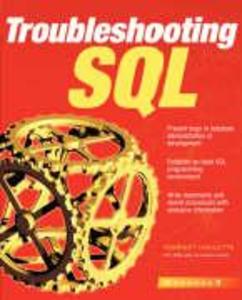The Ultimate Resource for Developing Error-Free SQL OperationsCreate a functional debugging environment to develop Structured Query Language solutions efficiently and troubleshoot SQL statements effectively. Use best practices to help perform maintenance, and to find and fix bugs when they do occur. Explore and familiarize yourself with SQL programming problems, learn to write code that's portable across databases, and realize efficiencies by expressing data in a variety of types. Develop the skills you need to debug SQL, and learn to move deftly and creatively around almost every limitation that SQL imposes on your operating environment.Write trouble-free SQL statements and procedures Optimize SQL statements and avoid problem areas Join and aggregate data and other SQL Select statements Debug and use practical regions and sequences Use and debug arrays, sets, and graphs Understand tree structures and hierarchies Secure data and protect response time Examine the appropriate use of data types Select, insert, update, and delete data using SQL syntax Recognize and mitigate fatal and logical errors Format SQL for single queries or extensive procedures using best practices
Inhaltsverzeichnis
Part I: Laying the Groundwork 1 Choosing a Troubleshooting Environment 2 Using Best Practices 3 Preparing Your Troubleshooting Environment Part II: Analyzing Problems 4 Creating Databases 5 Normalizing Tables 6 Using Data Types 7 Selecting Data 8 Inserting Data 9 Updating Data 10 Deleting Data 11 Grouping and Aggregating Data 12 Using Joins 13 Using Subqueries 14 Using Views Part III: Solving Complex Problems 15 Triggers, Stored Procedures, and Parameters 16 Transactions 17 Using Cursors and Exceptions 18 Trees











